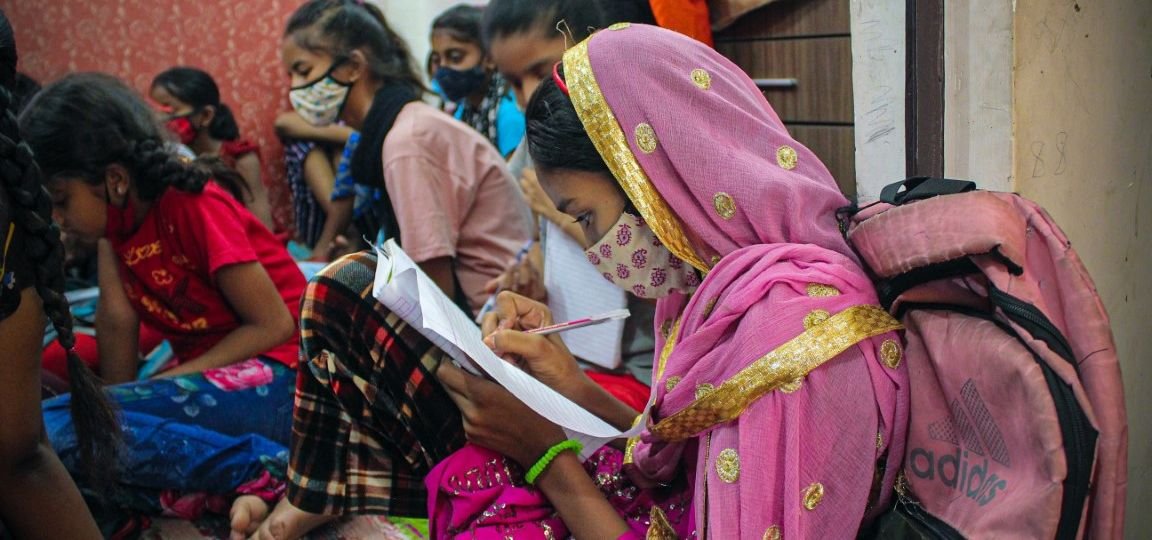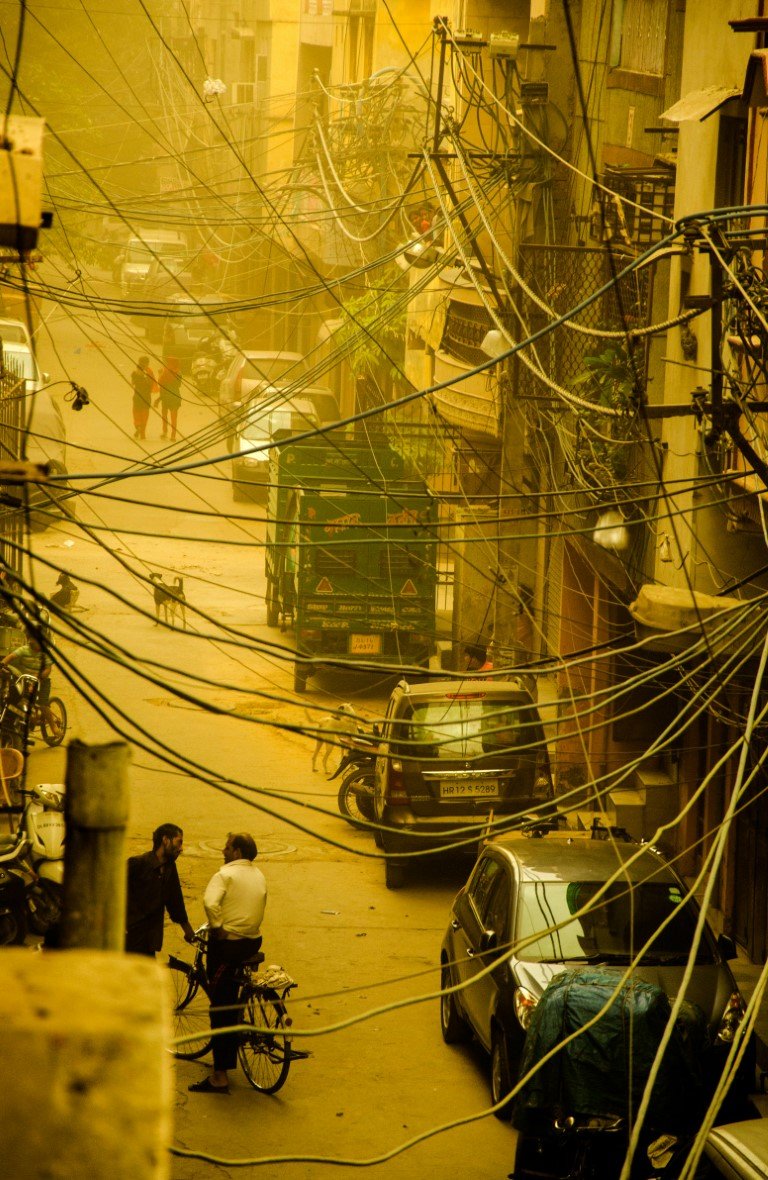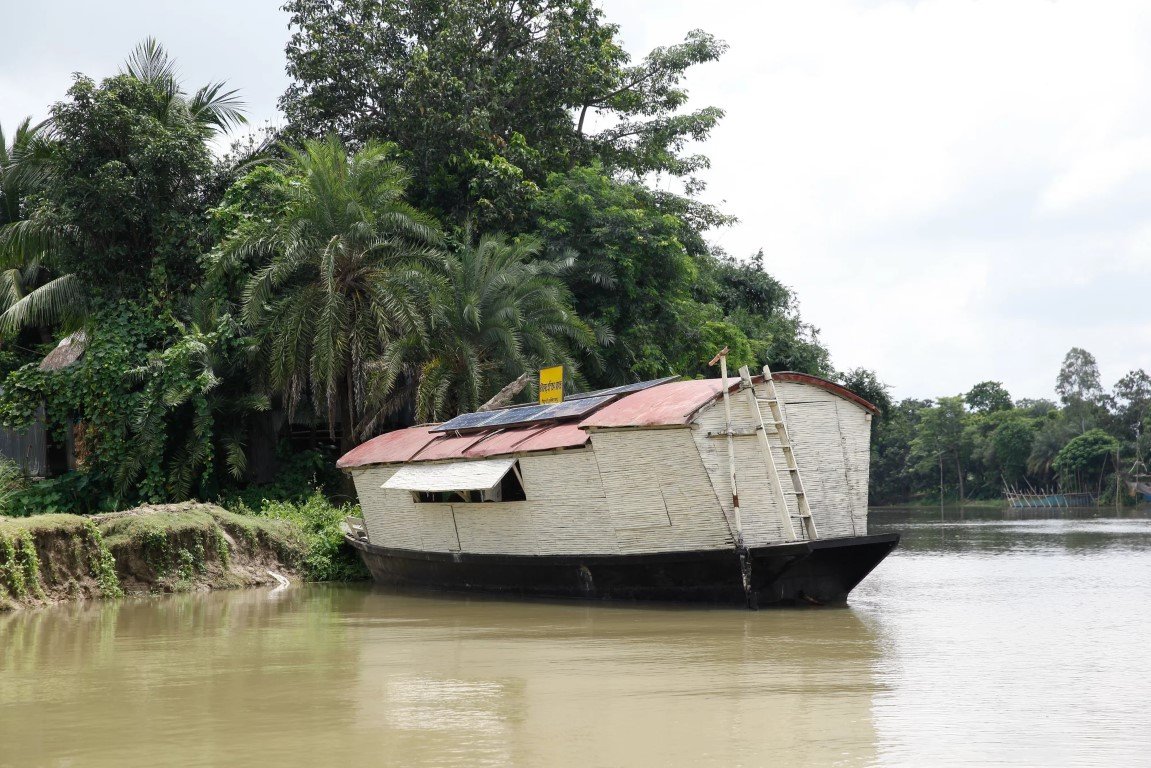
Author name: Vipul Yash
“मुझे पढ़ना अच्छा लगता है दीदी। लेकिन जब भी दिल्ली में स्मोग होता है, तब मेरी आँखें जलने लगती हैं, और सर भी दुखता है। ऐसे में किताबों में चाह के भी ध्यान नहीं लगा पाती।” – Suman[1]
UNICEF estimates that 76 percent of children under 18 in South Asia – 460 million – are exposed to extreme high temperatures where 83 or more days in a year exceed 35°C. This means that 3 in 4 children in South Asia are already exposed to extremely high temperatures compared to only 1 in 3 children (32 per cent) globally.
Global Sense for Climate Change
The predicament Suman is going through is not of her alone. The impact of climate change has emerged as a major cause of concern for humanity. So much so that no one around the world is immune to it. Be it Delhi or Dallas, climate change affects the lives of everybody to varying degrees. The severity of this somber reality was finally understood, and in 2015, a global consensus was reached to protect our environment by limiting the temperature rise by the end of this century to less than 2 degrees Celsius, preferably less than 1.5 degrees Celsius, compared to the pre-industrial level.
This global consensus, popularly known as the Paris Agreement, led to climate change capturing the attention of policymakers and civil society alike. World Economic Forum has accepted children being the worst hit, despite not contributing much towards the crisis. As recently as December 2023, the Paris Agreement follow-up meeting i.e. Conference of Parties 28 (COP28) meeting has made a declaration of the disproportionate effect of climate change on education and decided to make pivotal changes in the coming future to address it.
Children are most vulnerable as their health and protection can easily be compromised due to climate emergencies. While discussions, deliberations, and actions rightfully prioritize protection and health, education generally takes the back seat or it is an afterthought. As during any crisis, the response is generally need-based rather than rights-based. This cross-section of climate change and its impact on education has not been discussed much until recently. In November 2022, the United Nations Framework Convention on Climate Change (UNFCCC) decided to initiate a dialogue on the impact of climate change on children’s education.
The Indian Question
 In the Indian context, for a majority of children, living in impoverished conditions is their present reality. Education is the only way to end this impoverishment and create a better future for themselves and their families. But with the raging natural calamities that India faces, education is taking the brunt of it. For instance, in 2018, massive floods in Kerala impacted 1613 schools and 86634 students lost their learning supplies. In 2019, cyclone Fani in Odisha damaged 6791 schools. The national capital Delhi, which has often been at the receiving end of climate change challenges, witnessed extended school closures in 2023 due to floods and extensive air pollution. A study conducted by the University of Exeter, UK has predicted that the temperature rise by the end of this century will be by 2.7 degrees Celsius instead of 1.5 to 2 degrees Celsius as determined under the Paris Agreement. According to the report, India will be the worst affected country, where 600 Indians may be pushed outside the ‘climate niche’ i.e. the conditions within which a species can survive. The impact of such troubling statistics is not lost on the psyche of Indian youth, point in case being, 80% of Indian youth believe their education has been negatively impacted due to climate change, according to a UNICEF 2022 report.
In the Indian context, for a majority of children, living in impoverished conditions is their present reality. Education is the only way to end this impoverishment and create a better future for themselves and their families. But with the raging natural calamities that India faces, education is taking the brunt of it. For instance, in 2018, massive floods in Kerala impacted 1613 schools and 86634 students lost their learning supplies. In 2019, cyclone Fani in Odisha damaged 6791 schools. The national capital Delhi, which has often been at the receiving end of climate change challenges, witnessed extended school closures in 2023 due to floods and extensive air pollution. A study conducted by the University of Exeter, UK has predicted that the temperature rise by the end of this century will be by 2.7 degrees Celsius instead of 1.5 to 2 degrees Celsius as determined under the Paris Agreement. According to the report, India will be the worst affected country, where 600 Indians may be pushed outside the ‘climate niche’ i.e. the conditions within which a species can survive. The impact of such troubling statistics is not lost on the psyche of Indian youth, point in case being, 80% of Indian youth believe their education has been negatively impacted due to climate change, according to a UNICEF 2022 report.
“प्रोत्साहन की दीदी को तीन साल लगे पापा को मनाने में, कि मेरा दाखिला स्कूल में करवाए! अब जब पापा मान गए हैं, आये दिनों स्कूल ही बंद होता रहता है प्रदुषण कि वजह से।” – Anjali[2]
The impact of climate-induced disasters is not just limited to children’s ability to access a school. Even with accessibility, climate and environmental changes such as rising temperature, drought, and floods also affect their ability to learn. Though there is a lack of concrete data reflecting the same, it is not difficult to understand that a child facing a climate emergency won’t be able to perform to his or her full potential. UNESCO’s Green School Quality Standard can be applied to existing and future schools to lower the impact of climate change. The Green School Quality Standard sets the essential technical benchmarks for a climate-ready green school. It concentrates on integrating climate change and sustainability in four main areas i.e. teaching and learning; school facilities and operations; school governance; and community engagement.
 Both the problems i.e. learning interruptions and lowering of quality, require work, but what is much more worrisome and somber is the habituation of climate emergencies among children. In Delhi, children are habituated to breathing impure air, so much so that they do not give a second thought about it. According to studies, the former director of AIIMS Delhi has stated that air pollution increases the risk of cognitive decline. We all want to give our children a shot at a decent future, where they can become contributing members of society. In that case, this issue of climate change’s impact on education needs to be rectified, keeping in mind its varied form of impacts.
Both the problems i.e. learning interruptions and lowering of quality, require work, but what is much more worrisome and somber is the habituation of climate emergencies among children. In Delhi, children are habituated to breathing impure air, so much so that they do not give a second thought about it. According to studies, the former director of AIIMS Delhi has stated that air pollution increases the risk of cognitive decline. We all want to give our children a shot at a decent future, where they can become contributing members of society. In that case, this issue of climate change’s impact on education needs to be rectified, keeping in mind its varied form of impacts.
Way Forward
India, due to its varied geography and diverse society, is highly vulnerable to climate change challenges. According to the Global Climate Risk Index, India is the seventh (7th) most climate-affected country in the world.
As we have seen there are several sporadic examples of climate change impacting education, globally and nationally there has been a lack of debate concerning climate change and education. There needs to be more studies, which can map the holistic impact of climate change on the education levels of children. Resource allocation is required to gain a full picture of the crisis for a targeted and tailored solution.
As long as we are falling short at mitigation, we can look towards adaptation strategies to tackle the immediate challenge posed by discontinuity in schooling. For instance, Bangladesh accounts for a huge learning loss due to flooding. Shidhulai Swanirvar Sangstha, a non-profit based out of Dhaka, came up with a novel idea of floating schools in 2002. Now it has scaled to 500 schools serving 14,000 students across Bangladesh. Such out-of-the-box ideas can only come from the grassroots rather than from a top-down approach. Hence the importance of grassroots leadership cannot be stressed enough.

On a long-term basis, we need to think of ways in which children themselves can be involved in climate change discourse since they are the ones disproportionately affected by it. India has had environmental studies as a part of its school curriculum since the 1980s. However, it requires the incorporation of climate change studies, challenges, and mitigation measures.
An education that informs the children about the climate emergency will add children to the discourse, and promote climate-friendly behavior. This will also prepare them to face climate change challenges.
In India we are witnessing some positive changes. The National Education Policy 2020, has made it a point to impart holistic education to children which shall incorporate climate sensitivity. This is proposed to make Indian children future-ready and also give their contribution towards providing solutions for the climate crisis.
In the private sector, Dettol has come up with ‘Dettol Climate Resilient School’. Uttarakhand, renowned for its natural beauty, is highly vulnerable to the adverse effects of climate change due to factors such as melting glaciers, increasing population pressure, seismic activities, and overexploitation of natural resources. Recognizing the urgency to address these challenges, Dettol aims to equip schools with the necessary tools and knowledge to create climate-resilient communities in the State. The initiative focuses on educating and empowering the younger generation to become climate champions, driving positive change in their communities. By integrating sustainability practices into the curriculum, the project aims to reduce carbon footprint, enhance energy efficiency, and promote awareness about climate change among students, teachers, and the wider community. These schools will serve as models for sustainable practices and inspire future generations to take action.
Hence there is an acknowledgement of the impact of climate change on education. There needs to be a synergy in actions being taken to mitigate the effects of climate change by bringing together government agencies, the private sector, and experts to resolve this problem in the quickest time frame. If we depend on our children for the future the onus is on us to make their present enriching and safe from interruptions in education.
The adolescent migrant girls served by Protsahan, themselves conceptualised a video to educate their community members on the issue of global warming. In the video, the girls can be seen raising awareness about carbon footprint through various creative means like art, theatre, and filmmaking to educate the community members. The girls not only focussed on the problem at hand but also suggested steps we as individuals could take to mitigate the risk. The exercise aided the girls in improving their understanding of a serious topic in a creative way, while also engaging the community members.

